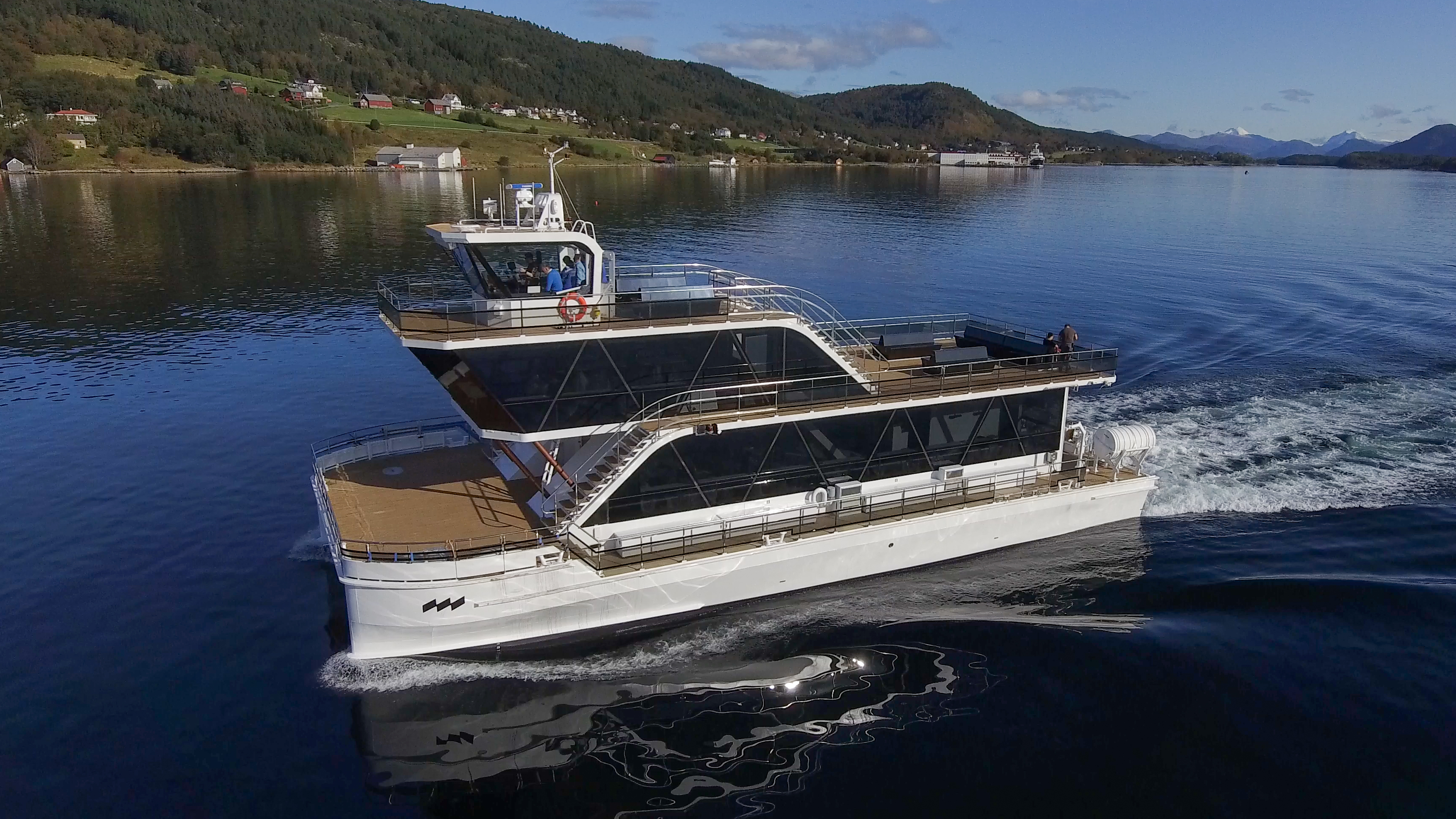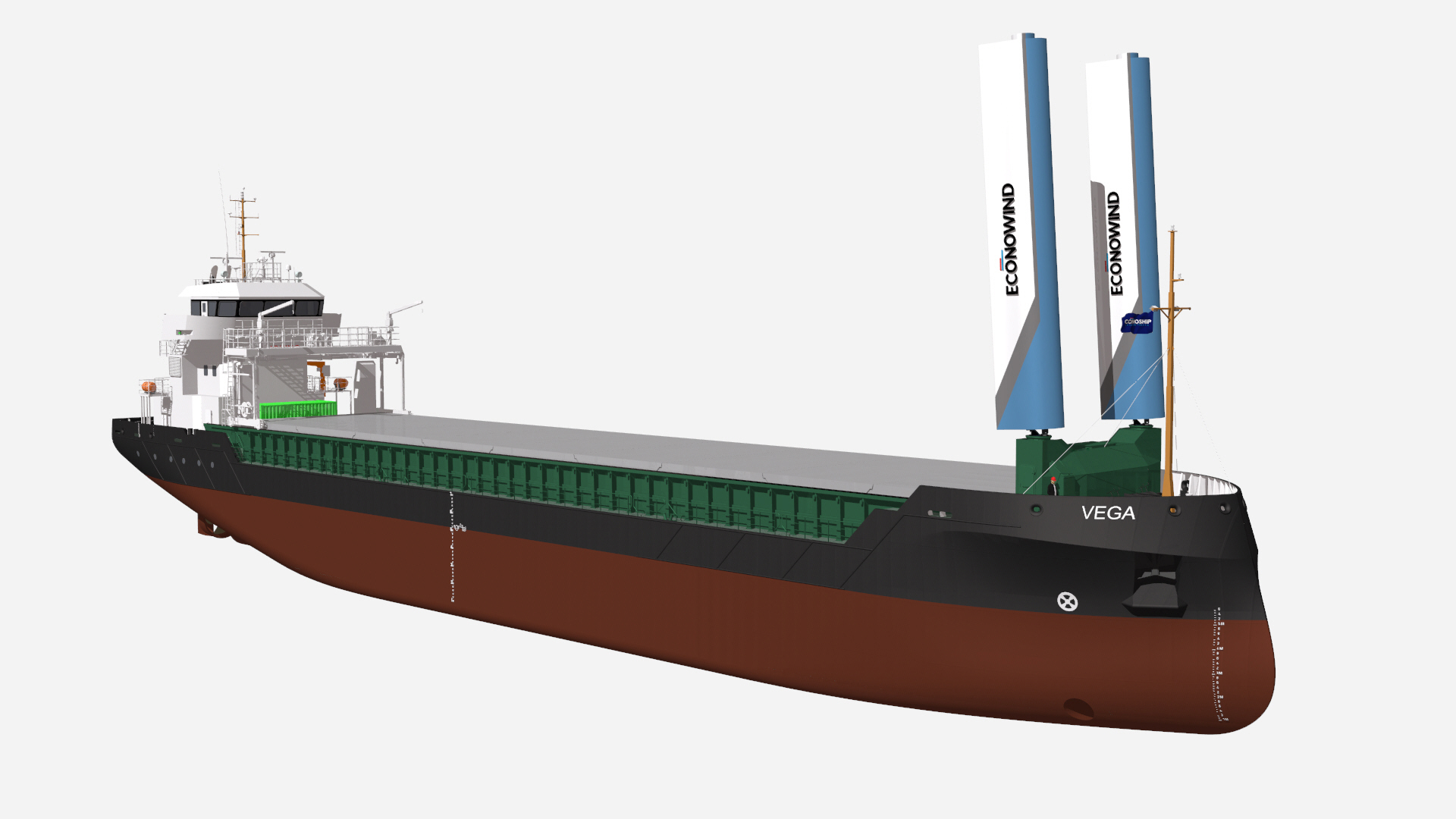Brim Explorer's first whale watching was launched just before the pandemic hit. It managed to survive and now has vessels four and five being built and created a tech spin off offering unique direct drive motors for electric vessels
by Craig Eason
Espen Larsen-Hakkebo can be heard frequently joking that he and his co founder, Agnes Arnadottir, created Brim Explorer in 2018 because they thought it might be easy, not because it was easy. Brim Explorer is about offering clean, near-silent boat tours, notably whale watching tours in North Norway.
The pair have a background in whale watching, and were certain that there was a need for a tourist service to watch and get near to the cetaceans without the risk of disturbing them with engine noise. Underwater radiated noise is an environmental concern with shipping in general at the top of the list of noise polluters with discussions starting internationally on mandating noise reductions.
But when the company looked at the need for a silent whale watching vessel it encountered a couple of problems. First was the need to get out to where the whales could be seen, an hours long trip at times, which a pure electric vessel could not easily manage, and secondly the need to really start from scratch.
And the lessons learned from these five years seem to be paying off as Brim Explorer has not only survived the Pandemic, but gone from strength to strength, now having three vessels on the water and two vessels being built, one of which is in partnership with Norled, the Norwegian ferry operator that has government contracts to offer services to many of the thousands of remote coastal towns in Norway. The Norwegian government often states in tender requests for ferry services that potential operators have zero or near zero emission vessels to operate on routes.
Norled has teamed up with Brim Explorer so the two companies are building a hybrid vessel with the Brim design but which can operate as a replacement vessel on Norled routes when the ferry company needs to take a vessel out of service for maintenance, while being available for Brim tourism activities at other times.
But not only has the vessel operations service gone well for Brim Explorer, the company has now spun off a new business, Brim Tech, having seen the need for a key solution for electric vessels.
Larsen-Hakkebo told Fathom World while speaking on the Aronnax Podcast that they soon realised when they started on their first electric vessel in 2018 was that they needed to start from scratch, throw all assumptions and rethink how you design the ship from the hull and upwards.
“One of our lessons building two hybrid electric ships first was we saw that there is a lot of energy efficiency gains to be found in optimizing your drive line by not thinking as if it were a diesel combustion engine with all the limitations that comes with that”.
This meant designing an optimal propeller for a hull, and then looking for the optimal motor for that propeller. This he added was the opposite way round had they built the vessels with more conventional diesel engines where the designers would look at how much energy is needed to run the vessel at a given speed, and then designing the propeller, which he says results in the speed of the diesel motor being a lot higher than the optimal speed of a propeller, resulting in a compromise.
“When we’re going electric, you don’t need to compromise because we have unlimited torque available in our newly developed direct drive motors.”
As they built the first vessels they had to work at finding the perfect motor for their needs, the ones the found initially were either too heavy or not powerful enough.
“We knew that it should be possible so it was basically a hunt for the perfect motor. We didn’t find it but we found a specialist in electromagnetism and high torque motors motor production, not for maritime use, but by teaming up with DNV, we were able to design with this company, a motor that’s basically has unlimited torque in our in our range of 10,000 to 50,000 Newton at a very low RPM”.
This is an important step as batteries, or energy storage devices, are becoming more compact and capable of holding more power and potential, the need to draw that into a motor and the motor then convert it into torque for a propeller will increase the options for a vessel’s operations.
“What we’ve done is that we’ve basically gone back to simpler time, if you’re looking at an old steamer, they had a direct drive motor, because the motors on steamer were very slow moving, and they would have a large propeller. So we’re basically taking going a step back in terms of applying new technology to old conventions.”
“The potential is there, for a very efficient propulsion line, if you want to make your propulsion line more efficient, you need to take away the mechanical losses that you have in a gear, you need to be able to optimize your propeller and have a more efficient propeller.
Many larger ships already have a direct drive, some even with direct drive electric motor, but what Brim Tech is doing is applying this for smaller vessels by utilizing their own motors.
“What we’ve identified as our core market would be passenger vessels of sizes from 10 to 50 meters, high speed crafts of the same size. But we’re also actually having now requests for a bulk carrier of 70 meters to carry concrete. So it’s, it’s basically very versatile, because what you have is, is a very powerful small motor that can propel a ship”.
Larsen-Hakkebo is now chief executive at Brim Tech, and Brim Explorer CTO, while Arnadottir remains at the helm of Brim Explorer.


































